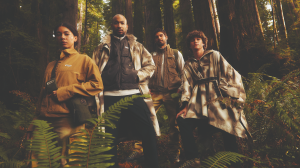Hugh Hefner, Playboy founder, died yesterday at 91. The publishing mogul was best known for the men’s magazine, first published in 1953, that contained as many bare beauties as it did published pieces from literary dignitaries: Ian Fleming, John Updike, Margaret Atwood, Vladimir Nabokov and Roald Dahl are just a few of the writers published in the mag, vindicating those who maintained they “read Playboy for the articles.”
Videos by ComicBook.com
Playboy would blossom into a media empire, launching movie, cable and digital production, clothing, lingerie and jewerly lines, clubs, and more; the iconic Playboy bunny logo itself becoming as unmistakable and recognizable as McDonald’s golden arches or the respective logos of Batman and Superman. And, perhaps surprisingly, there may have never been a Playboy without funny books.
“I was most interested in writing and cartooning,” Hefner told the Los Angeles Times in 2009. “I wrote short stories and lots of mysteries and horror stories and did comic books in grade school and high school. I actually started a comic-book autobiography in high school called ‘School Daze,’ about the adventures of my friends and myself. I then began adding clippings and photographs too. It eventually became like a scrapbook. I went directly out of high school into the Army; it was during World War II, and I continued that.
The comic book was a way of creating your own world and being center stage. And only years later did I realize that when I started the magazine, and the way I used the magazine in my life, it had a direct parallel to what I did in high school. The comic book became the scrapbook that I have continued then throughout my life and now has over 2,000 volumes.”
Hefner pointed to Terry and the Pirates and Steven Canyon writer-artist Milton Caniff as his illustrating idol, eventually recruiting the cartoonist for the sophomore issue of Playboy.
“During World War II, Caniff did a comic strip called Male Call with a very sexy lady named Miss Lace; it was in ‘Stars & Stripes‘ and ‘Yank‘, and it was for the service guys,” Hefner said. “I knew that some of them had been rejected for being too sexy. So when I started Playboy in summer of 1953, I wrote to Caniff and asked if I could reprint some of the strips, and I asked whether he would supply me with the ones that had been censored and not printed. Those appear in the second issue of Playboy. So my idol, for no particular reason, said yes to a kid that had this impossible dream and was puttering together the first issue of Playboy with literally just $8,000 and no hope.”
Aside from its buxom centerfolds and journalistic pieces, Playboy would also famously include cartoons from hundreds of artists, including Shel Silverstein, Buck Brown, Jack Cole, and Eldon Dedini. Hefner’s passing drew tributes and reactions from a stable of Hollywood celebrities, including Star Wars icon Mark Hamill and former Playboy model Jenny McCarthy.








